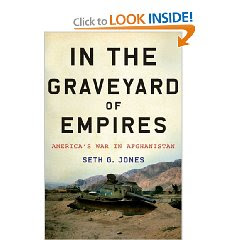Bravo to our men and women in uniform.The soldiers waited. The rules of the ambush were long ago drilled into them: no one can move, and no one can fire until the patrol leader gives the order. Then everyone must fire at once.
The third Taliban fighter in the column switched on a flashlight, the soldiers said, and quickly switched it off. About 50 yards separated the two sides, but Lieutenant Smith did not want to start shooting too soon, he said, “because if too many lived then we’d be up there fighting them all night.”
He let the Taliban column continue on. The soldiers trained their weapons’ infrared lasers, which are visible only with night-vision equipment, on the fighters as they drew closer. The lasers mark the path a bullet will fly.
The lead fighter had almost reached the platoon when Pvt. First Class Troy Pacini-Harvey, 19, his laser trained on the lead man’s forehead, moved his rifle’s selector lever from safe to semi-automatic. It made a barely audible click. The Taliban fighter froze. He was six feet away.
Lieutenant Smith was new to the platoon. This was his fourth patrol. He was in a situation that every infantry lieutenant trains for, but almost no infantry lieutenant ever sees. “Fire,” he said, softly into the radio. “Fire. Fire. Fire.”
The platoon’s frontage exploded with noise and flashes of light as soldiers fired. Bullets struck all of the lead Taliban fighters, the soldiers said. The first Afghans fell where they were hit, not managing to fire a single shot.
Friday, April 17, 2009
What the War in Afghanistan Is Really Like
Today's New York Times has one of the most incredible stories I've ever read. It is an account of the ambush of a Taliban column by a patrol from the second platoon of Company B, First Battalion, 26th Infantry of the US Army. It is the most detailed account of war I've seen in a newspaper, and a testament to the bravery, skill, and fortitude of the men and women who volunteer to serve our nation in the armed forces, risking their lives and being asked to kill on behalf of our security as well as the security of the poor people of Afghanistan. An excerpt:
Labels:
Afghanistan,
National Security,
US Military Policy
Subscribe to:
Post Comments (Atom)







1 comment:
I also happened to read this NYT article -- a piece of vivid reporting.
Post a Comment